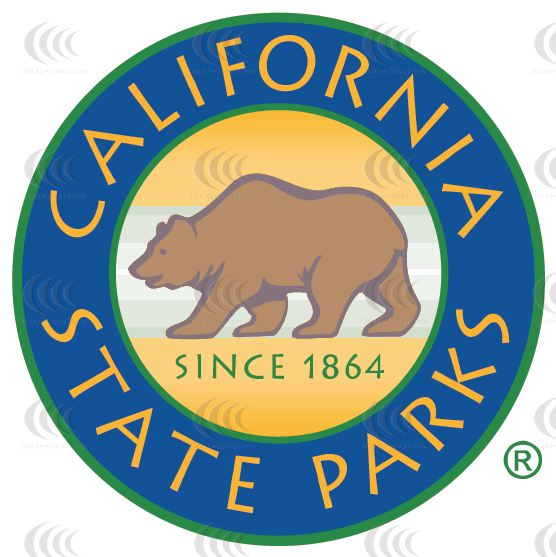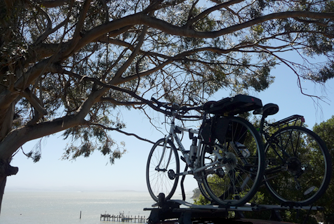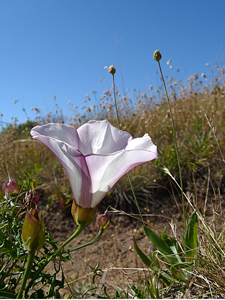
As the logo indicates, the California State Parks system has been in place for nearly 150 years. The system is now in peril. Due to budget constraints, in 2011, the state proposed the closure of 70 of California's state parks, nearly 25% of the entire system. In addition, many of the other parks operate on a shoestring. They are rundown and may be only open part-time. Most of these parks were spared temporarily when the state passed a bill that allows other organizations to share the expenses of maintaining the parks. But none of this funding is assured, and the reprieve is temporary. While many argue that California's parks should be maintained as a state treasure simply for their intrinsic value, our state park system has tremendous economic, cultural, and educational value as well.
The links at the left describe some of the amazing parks that were on the state's closure list and remain in peril. Please check out the pages, visit the parks, and consider how much we will lose if they are closed.
Please write to California representatives to ask them to support the parks. If you don't live in California, your letters still are important, particularly if parks influence your interest in visiting the state. Remember that this is an economic issue, so it will help if you write about the money you spend at local businesses while you are visiting the parks. You can also support one of the foundations that is helping to fund the threatened parks. You can find a list of foundations here.
To find out more about what you can do to help save California's State Parks by going to the California State Parks Foundation web site.
Please also check the Save Our State Parks web site and follow them on Facebook.
Thank you!!!
Our Parks Contribute to the Economy


It's true that our parks do get funding from the state, but several economic analyses from states around the country suggest that parks bring more money into state coffers than they take away. Parks attract tourists, who spend money not just in the parks, but in the nearby communities. Parks contribute to stream conservation, which, in turn, helps maintain fisheries. While the economy continues to struggle, in June 2011, the LA Times reported that sales of outdoor gear jumped 35% in 2010, and 10% of that jump comes from California. Several national outdoor chains, including REI, Dick's Sporting Goods, and Big 5 Sporting Goods are opening big new stores in California, which means more jobs and tax revenue for the state. A month earlier, the LA Times also reported that another important California economic engine, the film industry, relies on our state parks. In 2009, nearly 500 permits were issued for location shots in California parks. This brings money directly into the state, and it also encourages studios to shoot in the state, rather than move to competitive areas like Vancouver.
Famous movies that have shot scenes in California State Parks:
- A Few Good Men (Crystal Cove State Park)
- The Lost World: Jurassic Park (Del Norte Coast Redwoods State Park)
- Star Wars: Return of the Jedi (Grizzley Creek Redwoods)
- High Noon (Railtown 1897 State Historic Park)
- Back to the Future III (Railtown 1897 State Historic Park)
- North by Northwest (Railtown 1897 State Historic Park)
- There Will Be Blood (Saddleback Butte State Park)
- Outbreak (Humboldt Redwoods Redwood State Park)
- Vin Diesel's Triple X (Auburn State Recreation Area)
Parks Teach History and Culture


State parks are excellent resources for both formal and informal education. Many of the parks on California's closure list are historical areas. For example, Olomali State Park features many Miwok artifacts, including a reconstructed village. Interpretive signs teach visitors the history of the area. Parks are also a great place to learn
Parks Teach Science


As our children fall further behind in science awareness, we should remember that we are learning about basic principles of science while we play in the parks. The animals and plants interacting naturally in the wild teach us about biology. The Tufa Towers at Mono Lake teach us about chemistry and meteorology. The tortured cliffs in the parks of the central coast teach us about geology. Most of the parks feature some interpretive displays, and many host educational activities to encourage this. Best of all, when we learn in the parks, the education is associated with fun, rather than struggle.